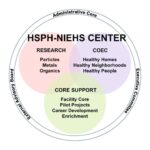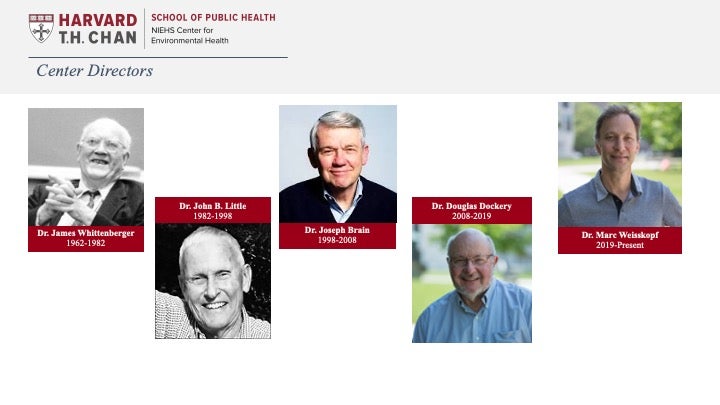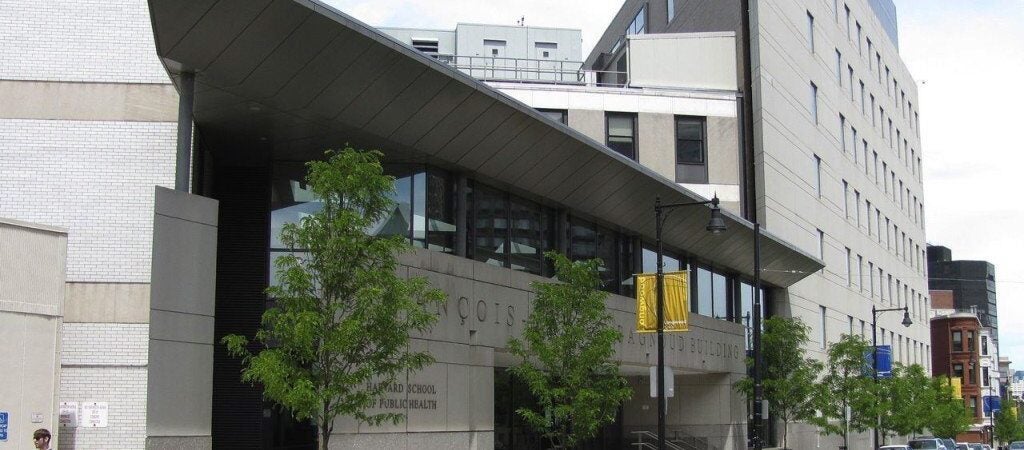 The Harvard Chan-National Institute of Environmental Health Sciences (NIEHS) Center for Environmental Health is a coordinated set of resources and facilities supporting environmental health research and training activities throughout the Boston area. Located at the Harvard T.H. Chan School of Public Health, in Boston’s Longwood Medical Area, the Center promotes integration between basic and applied environmental science, and fosters collaborations that cross departmental and institutional boundaries.
The Harvard Chan-National Institute of Environmental Health Sciences (NIEHS) Center for Environmental Health is a coordinated set of resources and facilities supporting environmental health research and training activities throughout the Boston area. Located at the Harvard T.H. Chan School of Public Health, in Boston’s Longwood Medical Area, the Center promotes integration between basic and applied environmental science, and fosters collaborations that cross departmental and institutional boundaries.
Our research combines population and patient based studies with mechanistic laboratory investigation to illuminate the pathways by which environmental exposures cause health effects. We prioritize questions that are directly relevant to real human populations, thus pivoting a two-way conversation between scientific knowledge production and community needs and values.
Rapid technological developments and the increasingly wired and connected world have expanded our ability to measure the external environment, human biology, and their interaction to generate a rich and nuanced picture of environmental exposures of people and place. The future of environmental health will be one of complex integration across a varied and rich exposure space. With this in mind, the theme of the Harvard Chan-NIEHS Center is a re-envisioning of the exposure environment and the integrated effects of chemical and non-chemical stressors of people and place to better understand the impact of exposure on human health.
History
Founded in 1962, the Harvard Chan-NIEHS Center for Environmental Health is the oldest of 20 core research centers across the country supported by the National Institute of Environmental Health Sciences (NIEHS). As the recipient of only the second grant awarded by the National Institutes of Health, it has the distinction of having NIH grant number ES-000002.
Over the past five-plus decades, the Center has supported research in the Department of Environmental Health’s focus areas of air pollution, metals, and organic chemicals. The Center helped support, for example, the landmark Six Cities Study, led by former Center Director Douglas Dockery, which found a strong link between air pollution and mortality risk and helped pave the way for strengthened U.S. regulations on fine particulate matter in the air.
Center investigators, led among others by Howard Hu in the past and now Marc Weisskopf, have been pioneers in the non-invasive measurement of lead in bone and other tissues using X-Ray Fluorescence (XRF) and the use of that approach to examine the connection between lead exposure and outcomes like cardiovascular disease and cognitive function. Other Center researchers have conducted studies that have looked at mercury in the environment. Elsie Sunderland, for example, found that hydroelectric plants in Canada that require the flooding of land can trigger increased levels of methylmercury, a neurotoxin, in the water, which then works its way into the food chain.
Center funding has helped develop the careers of young investigators by providing pilot grants for innovative research as well as assistance with writing grants and building professional networks. In the past decade, the Center has given out 100 pilot project grants, and those have led to 33 new NIEHS grants for individual researchers and more than 150 publications. In the last 5 years, 14 Center-supported researchers received career development awards from the National Institutes of Health, and 27 were appointed as faculty members at other institutions.
Other examples of Center-supported work include:
- Lindsay Jaacks’s work on the association between exposures to organic pollutants, such as polychlorinated biphenyls (PCBs) and organochlorine pesticides, and diabetes in developing countries;
- Tamarra James-Todd’s research on how hormone-disrupting chemicals might affect mothers’ heart and metabolic health during pregnancy and contribute to disease later in life;
- Maitreyi Mazumdar’s research on whether prenatal exposure to arsenic may increase risk of infant neural tube defects;
- Wanda Phipatanakul’s examination of the effectiveness of air cleaning in schools in reducing the prevalence and severity of asthma;
- Catherine Racowsky’s collaboration with Russ Hauser, chair of the Department of Environmental Health and director of its organic chemicals research core, to study the impact of bisphenol A (BPA) on human egg quality.
TIMELINE


